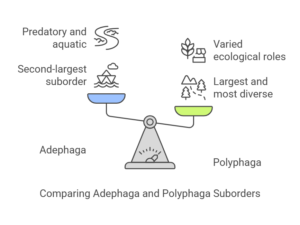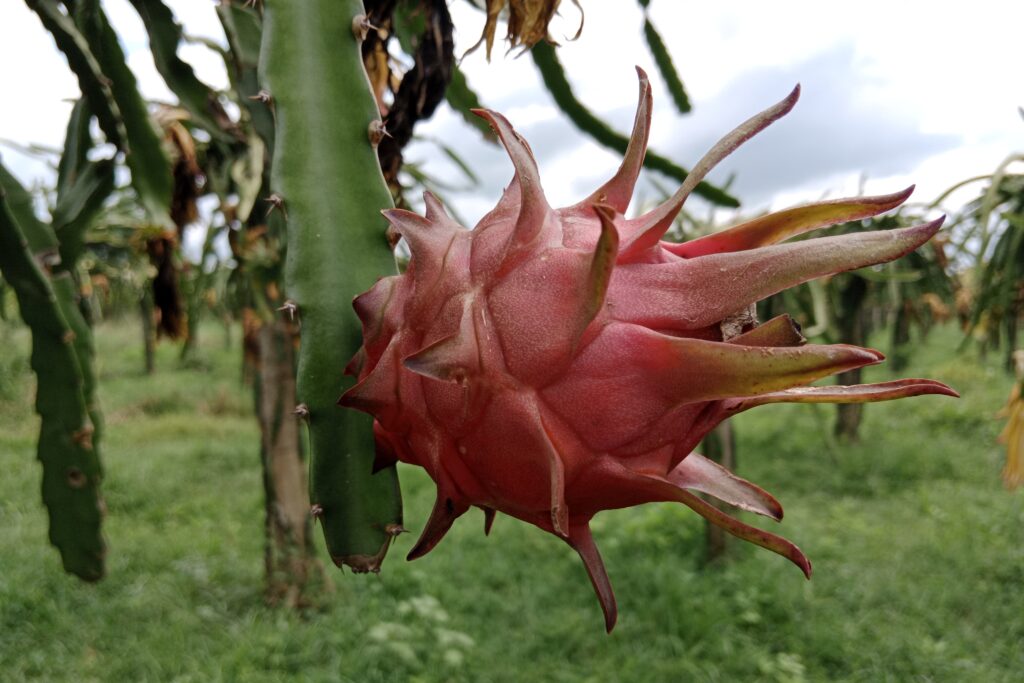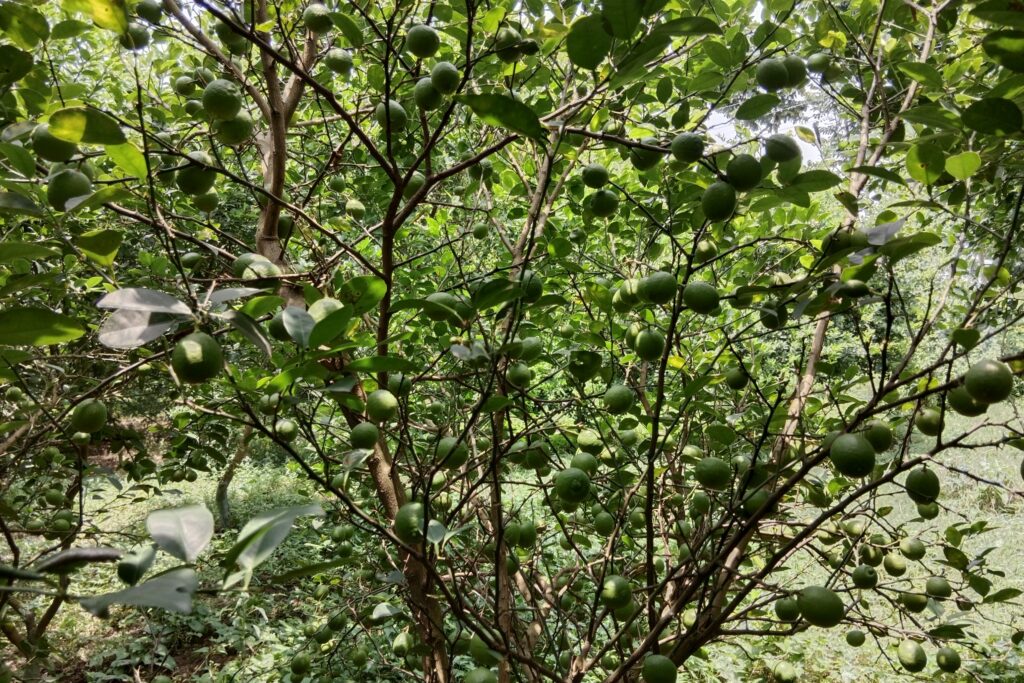Beetles in Agriculture
Beetles (order Coleoptera) are one of the most diverse and ecologically significant groups of insects, playing both beneficial and harmful roles in agriculture. With over 360,000 known species worldwide, they have evolved a vast range of adaptations that allow them to thrive in nearly every habitat, from dense forests to arid deserts. Their varied diets and survival strategies make them both essential allies and formidable pests in farming systems.
While some beetles contribute to pollination, organic matter decomposition, and pest control, others pose serious threats to crops and stored grains by feeding on leaves, stems, roots, and seeds. Understanding the life cycle, taxonomy, and ecological impact of beetles in agriculture is crucial for developing effective management strategies that balance their benefits while mitigating the damage caused by agricultural pests. This article delves into the fascinating world of beetles, exploring their adaptations, classification, and role in agriculture, along with control strategies to manage pest species.
The Life Cycle of Beetles
Beetles (order Coleoptera) undergo a complete metamorphosis (holometabolism), transitioning through four distinct stages—egg, larva, pupa, and adult—each serving a crucial role in their survival and adaptation. This complex developmental process allows beetles to exploit different ecological niches at various stages of their life cycle, reducing competition for resources between juveniles and adults.

Egg Stage
The female deposits her fertilized eggs in precisely chosen sites that offer the ideal conditions for larval development, marking the start of the beetle life cycle. Depending on the species, these sites could include wood, decomposing organic debris, soil, plant tissues, or food items that have been kept. Some beetles, including weevils and leaf beetles, lay their eggs on or inside of host plants so that the freshly hatched larvae can start eating right away. Different kinds of beetles lay different numbers of eggs; some lay thousands over their lifetime, while others only lay a few.
Larval Stage (L1–L5)
Once the eggs hatch, beetle larvae emerge as the primary feeding stage of their life cycle. They have sclerotized (hardened) head capsules, powerful mandibles, and thoracic legs for movement, allowing them to consume a wide variety of food sources. The diet of beetle larvae varies greatly depending on the species:
- Herbivorous larvae (e.g., leaf beetles, weevils) feed on plant leaves, stems, or roots.
- Predatory larvae (e.g., ground beetles, ladybugs) hunt smaller insects.
- Saprophagous larvae (e.g., dung beetles, carrion beetles) break down decomposing organic material, playing an essential role in nutrient cycling.
Unlike caterpillars, beetle larvae lack abdominal prolegs and rely solely on their three pairs of thoracic legs for movement. Some species, such as wireworms (click beetle larvae), burrow underground, while others remain active on plant surfaces. Depending on the species, the larval stage may last from a few weeks to several years, undergoing multiple molts (instars) before pupation.
Pupal Stage
After completing its larval growth, the beetle enters the pupal stage, a period of internal transformation where it undergoes metamorphosis into an adult. This stage is typically spent inside a protective cocoon, soil chamber, or within plant material, providing shelter from predators and environmental stresses.
- Beetle pupae are classified as adecticous (with non-functional mandibles) and exarate (with free, visible appendages).
- During this non-feeding and immobile stage, the insect’s internal organs, wings, and exoskeleton undergo restructuring.
Depending on environmental conditions and species, the pupal stage may last from days to months before the adult beetle emerges. Some species enter diapause, delaying their emergence until favorable conditions return.
Adult Stage (Imago)
The final stage of a beetle’s life cycle is the adult stage (imago), characterized by fully developed elytra (hardened forewings) that protect the delicate hind wings used for flight. While some beetles are strong fliers (e.g., click beetles and scarabs), others, such as grain weevils, are flightless.
The primary focus of the adult stage is survival, dispersal, and reproduction. Depending on the species, adult beetles may live for a few weeks to several years, feeding on plants, fungi, decomposing materials, or other insects. Some species, such as dung beetles, contribute to ecosystem health by breaking down organic waste, while others, like agricultural pests (e.g., Colorado potato beetles, weevils), can cause significant crop damage.
Adaptations of Beetles
Because of their remarkable morphological and behavioral adaptations, beetles (order Coleoptera) can flourish in almost any environment on Earth. They are among the most dominating insect orders because of these adaptations, which also help them be resilient, survive, and thrive ecologically.

Sclerotized Armor: An Amazing Exoskeleton Formed
Beetles are distinguished by their sclerotized exoskeleton, a hard, chitinous outer shell that offers several benefits:
- Predator protection: The tough cuticle acts as a barrier to keep out small mammals, birds, and other insects.
- Resistance to desiccation: By reducing water loss, the exoskeleton enables beetles to endure in arid and dry conditions.
- Structural support: By giving muscles places to attach, this external structure permits powerful jaws and effective movement.
Prothorax Shielding: An Extra Layer of Defense
The prothorax, the first segment of the thorax, features a specialized protective plate called the pronotum. This structure acts as a defensive shield, covering the head and thorax from potential threats. In some beetles, such as ground beetles (Carabidae), the pronotum is expanded and reinforced, offering additional protection from predators and environmental hazards.
Elytra: Hardened Forewings for Protection
One of the most distinctive adaptations of beetles is their elytra—the hardened forewings that act as protective covers for the delicate hind wings used for flight. The elytra serve several essential functions:
- Armor against physical damage: Protects the beetle’s body from mechanical injury and harsh environmental conditions.
- Concealment: Provides camouflage, blending with the surroundings to avoid detection by predators.
- Water resistance: Helps certain species, such as aquatic beetles, stay buoyant and waterproof.
- Flight adaptation: While not all beetles are strong fliers, many species can unfold their hind wings from beneath the elytra for aerial mobility.
These adaptations have enabled beetles to colonize diverse habitats, from rainforests and deserts to freshwater and underground environments.
Suborders of Coleoptera: A Taxonomic Overview
The order Coleoptera is the largest insect order, comprising nearly 40% of all described insects. It is divided into two major suborders, each containing distinct families with specialized ecological roles.

Suborder: Adephaga
Adephaga is the second-largest suborder of beetles, primarily consisting of predatory and aquatic species. This suborder includes approximately 10 families, with members playing crucial roles in maintaining ecological balance.
Key Features of Adephaga Beetles
- Hind coxae extend to the third abdominal segment, providing structural reinforcement.
- Larval legs have two claws per tarsus, which aid in gripping prey and navigating rough terrain.
- Most species are fast-moving hunters, preying on other insects and small invertebrates.
Family: Carabidae (Ground Beetles)
- One of the largest families in Adephaga, with over 40,000 species worldwide.
- It is highly beneficial for agriculture due to their predation on crop pests.
- Often found in soil, leaf litter, and under rocks, actively hunting for prey.
Suborder: Polyphaga
About 85% of all beetle species belong to the largest and most varied suborder of the Coleoptera, Polyphaga. Beetles in this suborder have an incredible range of eating behaviors, from scavenging and herbivory to predation and wood boring.
Key Features of Polyphaga Beetles
- Hind coxae do not reach the second abdominal sternite, allowing greater flexibility.
- Larval tibia and tarsus are fused into a tibiotarsus, which enhances mobility and adaptability.
- Includes beetles of various ecological roles, such as decomposers, pollinators, and agricultural pests.
Representative Families in Polyphaga
- Staphylinidae (Rove Beetles)
- One of the largest beetle families, with over 63,000 species.
- Recognized by their short elytra, exposing a flexible abdomen.
- Play an essential role in decomposition and are often found in soil, leaf litter, and dung.
- Scarabaeidae (Scarab Beetles)
- Includes dung beetles, flower beetles, and rhinoceros beetles.
- Many species help with nutrient cycling by breaking down organic material.
- Some scarabs, like the Japanese beetle (Popillia japonica), are serious agricultural pests.
- Chrysomelidae (Leaf Beetles)
- A plant-feeding group, including notorious pests like the Colorado potato beetle (Leptinotarsa decemlineata).
- Known for their bright colors and patterned elytra.
- Some species cause economic damage to crops by defoliating plants.
Also Read About: San Jose Scale Insect
Beetles in Agriculture: Friends and Foes
Beetles (order Coleoptera) play a significant role in agriculture, acting as both destructive pests and valuable allies. Their impact depends on their feeding behavior and ecological functions. While some species devastate crops by feeding on plant tissues, others help control pests and enhance soil health. Understanding the dual nature of beetles in agricultural ecosystems is crucial for effective crop management and sustainability.
Pest Species: Threats to Crops
Several beetle families are notorious for their harmful impact on crops, as they feed on leaves, stems, roots, and stored grains, leading to reduced yields and plant health.
- Chrysomelidae (Flea Beetles and Leaf Beetles)
- These beetles are small but highly destructive, feeding on the foliage of various crops.
- Flea beetles (Alticini) attack plants like potatoes, cabbage, and beans, creating small holes in leaves and weakening seedlings.
- The Colorado potato beetle (Leptinotarsa decemlineata) is a major agricultural pest that severely defoliates potato, tomato, and eggplant crops.
- Curculionidae (Snout Beetles and Weevils)
- Weevils are among the most damaging beetle pests, attacking plants both in the field and during storage.
- The boll weevil (Anthonomus grandis) is infamous for its destruction of cotton crops.
- Root-feeding weevils, such as the black vine weevil (Otiorhynchus sulcatus), can kill plants by feeding on their roots.
Beneficial Species: Nature’s Pest Controllers and Soil Enrichers
Many beetles offer vital agricultural benefits by reducing pests, enhancing soil fertility, and recycling nutrients, even in the face of damage from pest species.
- Carabidae (Ground Beetles): Natural Pest Predators
- Ground beetles are highly effective predators that feed on insect pests such as aphids, caterpillars, and slugs.
- They play a crucial role in organic farming by supporting natural pest control, reducing the reliance on chemical insecticides.
- Scarabaeidae (Dung Beetles): Soil Fertility Boosters
- Dung beetles are vital for breaking down animal waste, recycling nutrients back into the soil.
- Their activity of burying dung improves soil aeration, boosts water retention, and promotes plant growth, making them indispensable for sustainable farming practices.
Beetle Biodiversity
Beetles are among the most diverse organisms on Earth, with over 360,000 known species worldwide and approximately 7,000 species in Central Europe alone. Their adaptability, varied diets, and unique life strategies make them essential components of global ecosystems.
Beetle Pests and Their Control: A Focus on Biological and Chemical Strategies
Beetle pests pose a significant threat to crops and stored grains, causing economic losses and reducing food quality. Controlling these pests requires an integrated pest management (IPM) approach that combines chemical insecticides, biological control agents, and preventive strategies. This ensures effective pest suppression while minimizing environmental impact and insecticide resistance.
Below, we examine two major beetle pests—the Broad-Nosed Beetle and the Grain Weevil—along with their lifecycles, damage potential, and control measures.
Broad-Nosed Beetle (Otiorhynchus sulcatus)
Lifecycle and Damage
The broad-nosed beetle, commonly referred to as the black vine weevil, is a highly destructive pest that targets a wide range of horticultural crops, fruit trees, and ornamental plants. It poses a significant threat to species such as strawberries, rhododendrons, and vines.
Adult Stage
- Adults consume leaves, leaving behind irregular notches along the edges.
- While the damage may appear superficial, continuous feeding weakens the plant, increasing its vulnerability to diseases.
Larval Stage
- This stage is the most damaging, as larvae feed on plant roots, often leading to wilting, stunted growth, and even plant death.
- Larvae develop underground, making them challenging to detect and manage effectively.
Control Measures
Effective management of broad-nosed beetles involves chemical and biological strategies to target both adult and larval stages.
Chemical Control
- Pyrethroid insecticides are commonly used to target adult beetles.
- However, pyrethroid resistance is a growing problem, especially in crops like oilseed rape and potatoes.
Biological Control
- Entomopathogenic nematodes (e.g., Heterorhabditis bacteriophora and Steinernema spp.) effectively infect and kill beetle larvae in the soil.
- Bacillus thuringiensis tenebrionis (Bt-based products), such as Novodor, provide targeted larval control without harming beneficial insects.
- Neem-based formulations (e.g., NeemAzal TS) act as natural insect growth regulators, disrupting larval development.
Grain Weevil (Sitophilus granarius)
Lifecycle and Damage
The grain weevil, also known as the granary weevil, is a serious pest of stored grains, cereals, and rice. Unlike other beetles, it is flightless, making it highly dependent on stored food environments.
Larval Stage
- The larvae develop inside grain kernels, consuming the endosperm, which reduces grain weight, quality, and germination potential.
- Infested grains become powdery and unfit for human consumption.
Adult Stage
- Adults bore tiny holes into grains to lay their eggs.
- Multiple generations can develop within stored grain, leading to rapid population growth and severe infestations.
Control Measures
Controlling grain weevils is challenging due to their hidden lifecycle inside grains. Both chemical and biological control methods can help manage infestations.
Chemical Control
- Pyrethroid insecticides are used against adult weevils, but resistance is an emerging problem in some populations.
- Pyrethroids act as axonic excitotoxins, disrupting nerve function and causing insect paralysis and death.
Biological Control
- Entomopathogenic fungi (e.g., Beauveria bassiana and Metarhizium anisopliae) infect and kill grain weevils naturally.
- Parasitoid wasps, such as Anisopteromalus calandrae, target weevil larvae inside the grains, offering a natural form of pest suppression.
Emerging Challenges in Beetle Pest Control
While chemical control remains widely used, insecticide resistance is an increasing concern. As a result, sustainable and biological approaches are becoming more important in long-term pest management.
Alternative Control Methods
- Bacillus thuringiensis (Bt): Specific Bt strains, target beetle larvae without harming beneficial organisms.
- Neem-Based Products: Natural neem extracts disrupt beetle reproduction and development.
- Pyrethrins: Derived from chrysanthemum flowers, pyrethrins provide a natural insecticidal alternative with lower resistance risks than synthetic pyrethroids.
Conclusion
The control of beetle pests like the broad-nosed beetle and grain weevil requires a holistic approach that balances chemical, biological, and preventive strategies. While insecticides remain a tool for immediate pest suppression, the rise in resistance highlights the need for sustainable alternatives.
By integrating biological control agents (e.g., entomopathogenic fungi, nematodes, and parasitoids) with targeted insecticides and natural plant-based solutions, farmers and grain managers can adopt effective, long-term pest management strategies that minimize environmental impact and preserve agricultural productivity.



Pingback: How to Get Rid of Whiteflies: 7 Proven Strategies -
Pingback: Identification and management of lepidoptera in Agriculture -